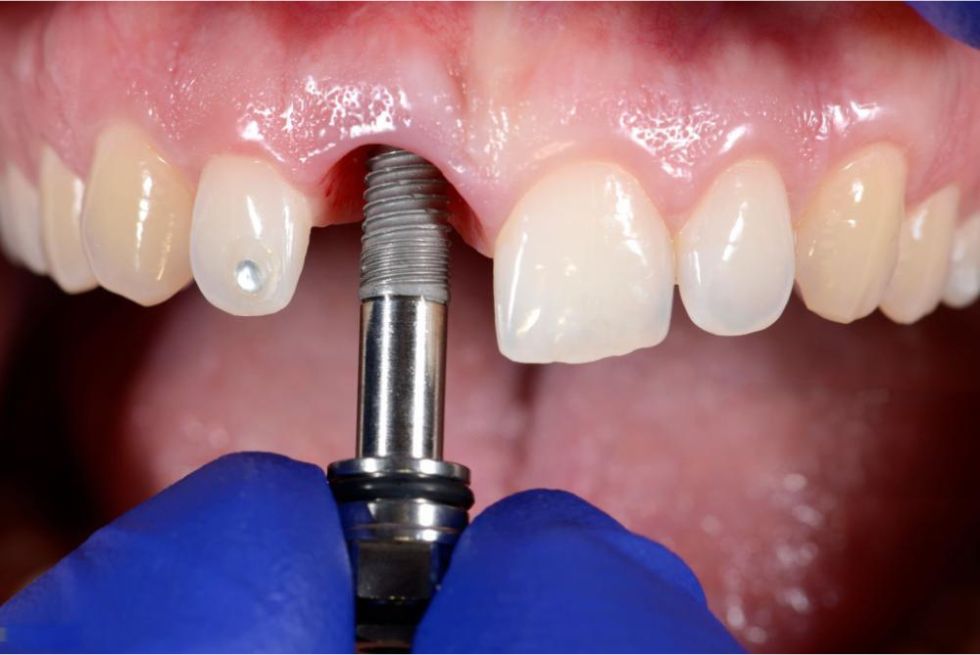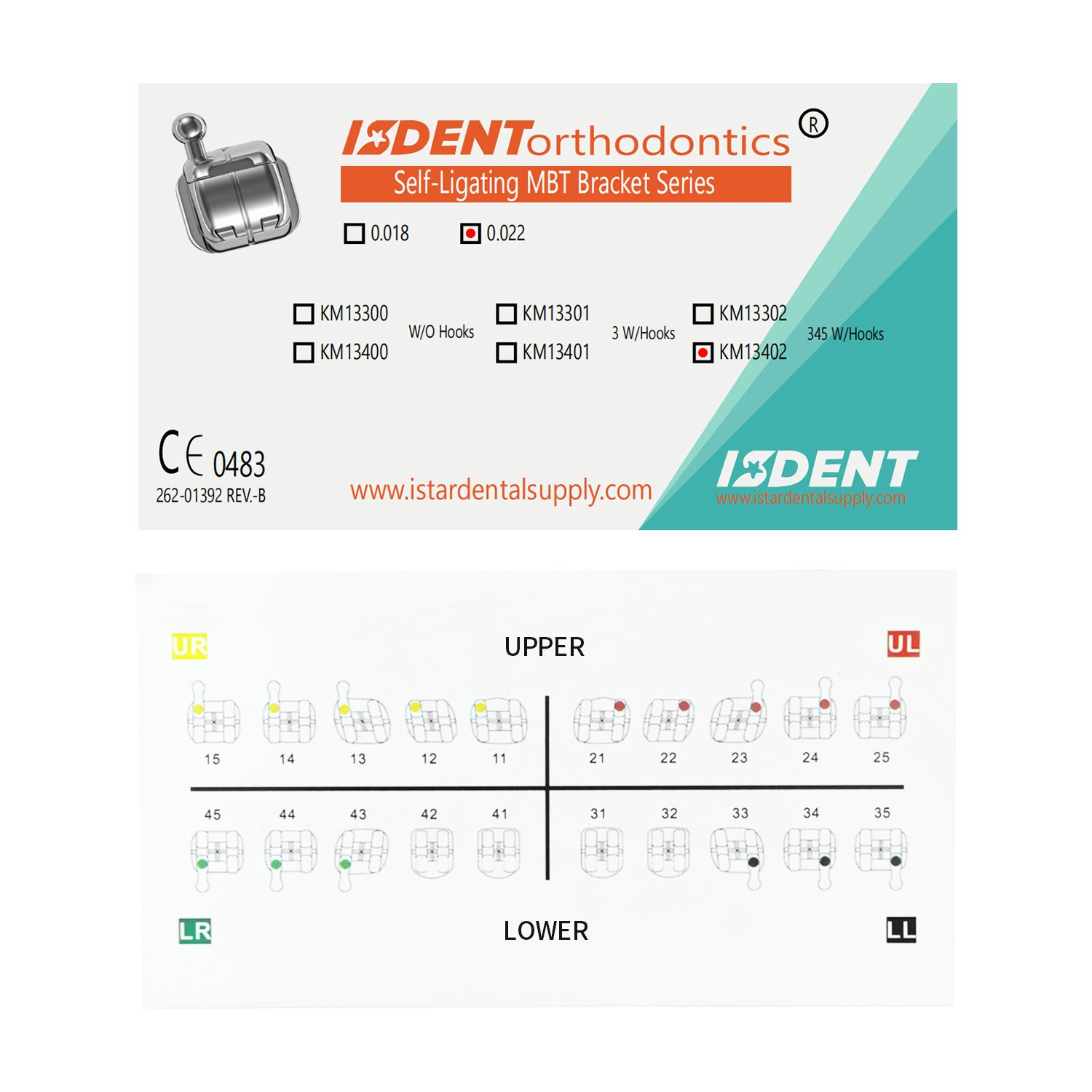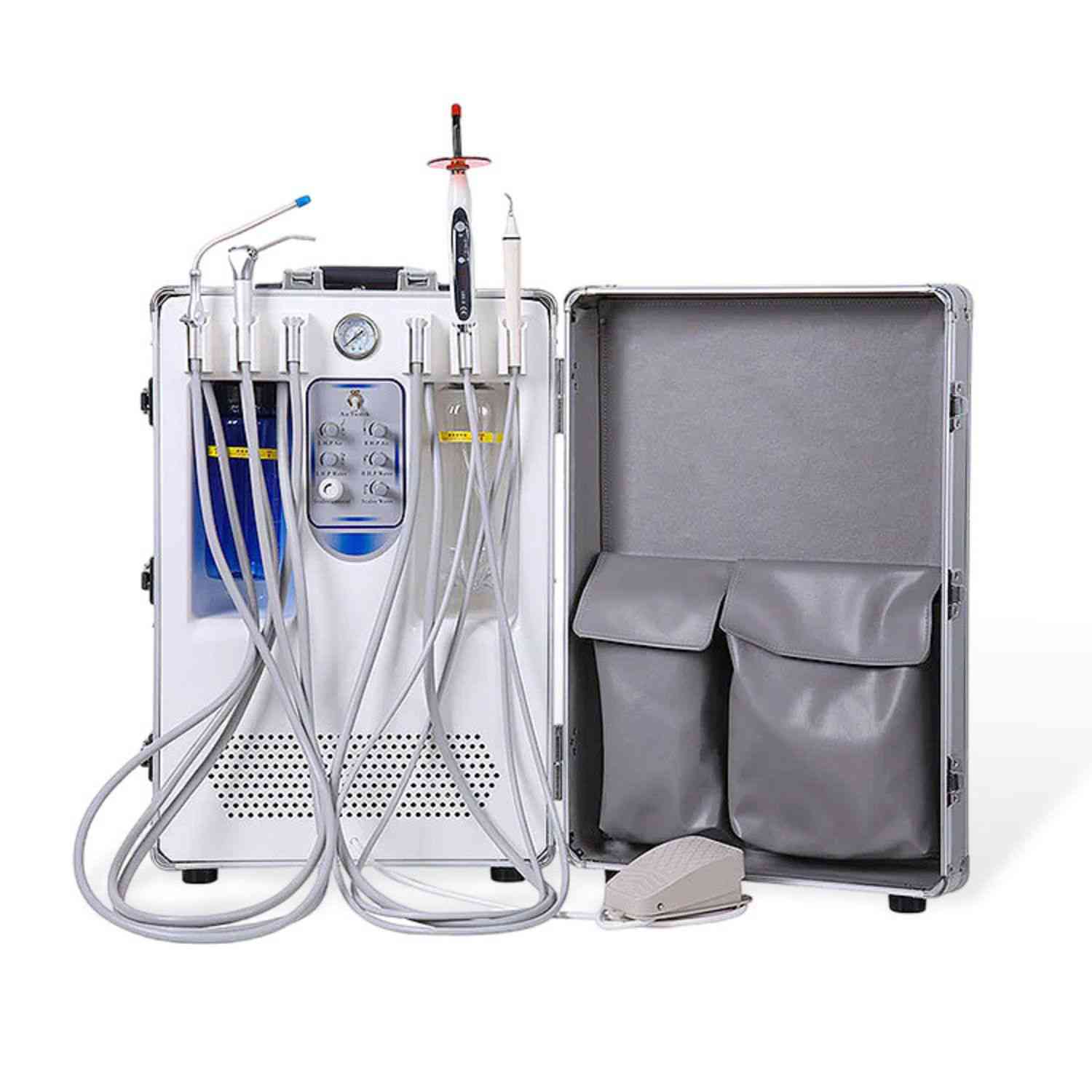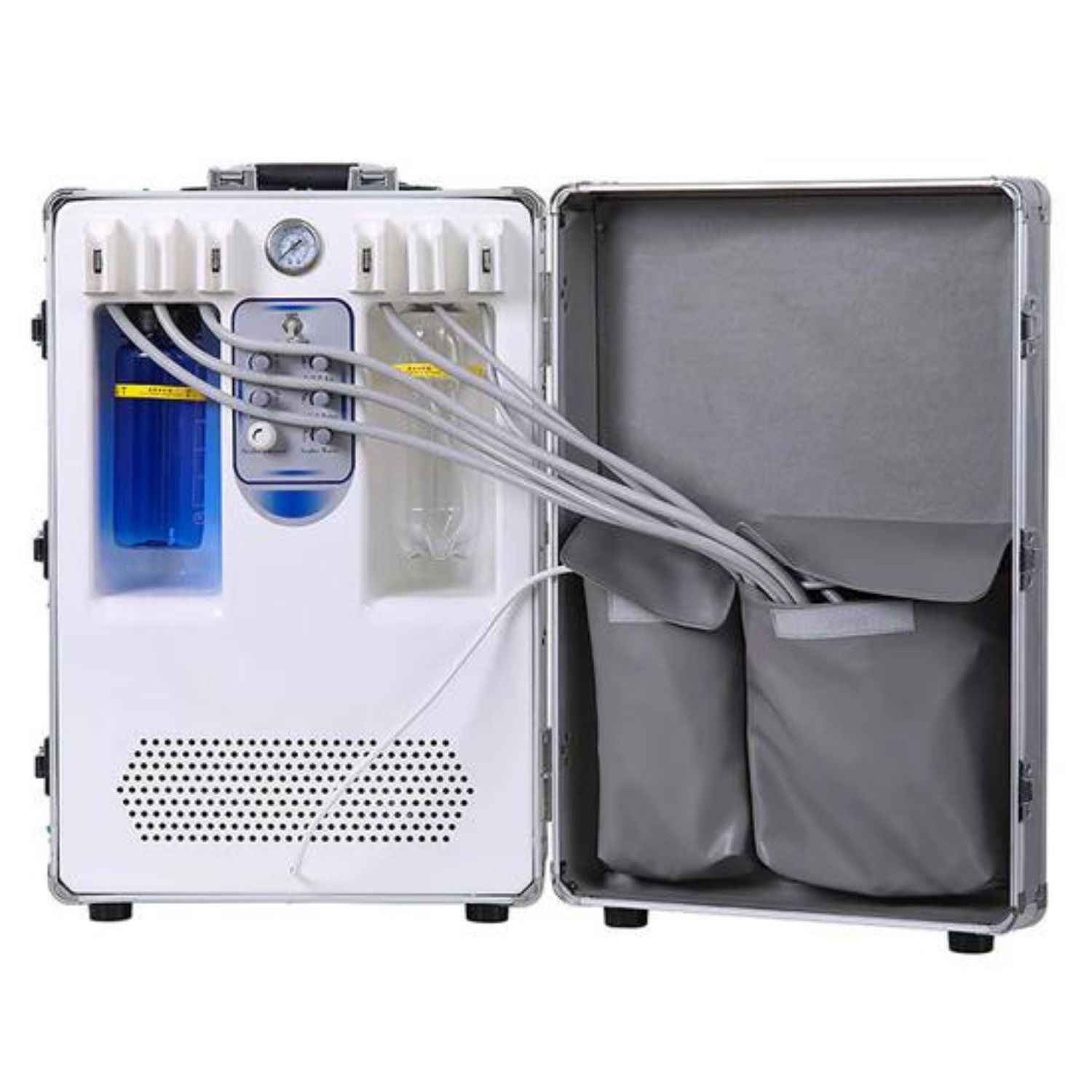Can You Get a Dental Implant Years After a Tooth Extraction?
I remember the empty space in my smile like an old friend. For years, it was just there. I had a tooth extraction a long time ago and, like many people, I kept putting off replacing it. Life gets busy, other costs come up, and you just get used to it. But I always wondered, "Did I wait too long? Can I still get a dental implant even though it’s been years?" If you are asking that same question, this article is for you. I’m going to share what I learned on my journey. We will look at why it's not too late to get the smile you want, even if many years have passed since your tooth was removed. You will learn about the challenges and the amazing solutions modern dental care offers.
Why Did I Go Without Dental Implants for So Long?
For me, the journey to getting a dental implant started nearly a decade after my tooth extraction. When the tooth first came out, I was told a dental implant was the best option. But at the time, I was worried about the cost and the implant procedure. So, I decided to wait. One year turned into two, then five, and before I knew it, almost ten years had gone by. The gap in my smile didn't hurt, and I learned to chew on the other side of my mouth.
But over time, I noticed little changes. My other teeth started to shift slightly. I felt less confident when I smiled for photos. The thought of getting a dental implant came back, but now a new fear crept in: was it too late? I had heard that you lose bone in your jaw after a tooth is removed. I was sure I had missed my chance. This is a common story. Many people wait months or even years to replace a missing tooth. If you’re in that boat, know you are not alone. The good news is that advancements in dental technology have made it possible to solve this problem.
Is It Really Possible to Place Dental Implants Years After a Tooth Extraction?
Let me give you the short answer right away: Yes! It is absolutely possible to get a dental implant years after a tooth extraction. I was so relieved when my dentist told me this. Even if it’s been years since your tooth was pulled, you don’t have to rule out dental implants. Modern dental tools and techniques have created amazing solutions for people who have been living with missing teeth for a long time. A dental implant is a strong metal post, usually made of titanium, that acts like a new tooth root. It is placed into your jawbone.
The main concern when you wait a long time is the health of your jawbone. But even if you have lost some bone, there are procedures to fix it. An experienced dental professional can create a personalized treatment plan for you. They will check your specific situation and see what needs to be done to make a dental implant successful. So, whether it was a dental implant 2 years after extraction or a dental implant 10 years later, the possibility of getting dental implants is very real. You can still get a dental implant.
What Happens to Your Jawbone After a Tooth is Removed?
This was the part that worried me the most. When you have a tooth, the root stimulates your jawbone every time you chew. This keeps the bone strong and healthy. When a tooth is removed, that stimulation is gone. Your body, being very efficient, decides it doesn't need that bone anymore and starts to break it down. This process is called bone resorption. It starts right after the tooth extraction and continues over the years.
Think of it like a muscle. If you stop using your arm, the muscle gets smaller. The same thing happens to your jawbone. This is why getting a dental implant is so important. A dental implant is the only tooth replacement option that acts like a natural tooth root. It fuses with your jawbone and provides that needed stimulation, which stops bone loss. If you go without dental implants, the bone loss can affect the shape of your face and the stability of your other teeth. The good news is, even if bone loss has happened, your dentist can often rebuild it.
How Do You Know if You Still Qualify for Dental Implants?
Not everyone is a perfect candidate for dental implants right away, especially if years have passed. Your implant dentist will do a full check-up to see if dental implants are right for you. They will look at a few key things to determine if you are one of the good candidates for dental implants. Getting a dental implant is a big step, so this evaluation is very important for the long-term success of your new tooth implant.
Here is a simple checklist of what your dentist will look for.
Checklist: Are You a Candidate for a Dental Implant?
|
Factor |
What the Dentist is Looking For |
|
Jawbone Health |
Is there enough bone width and height to support a dental implant? This is checked with a 3D X-ray called a CT scan. |
|
Gum Health |
Are your gums healthy and free of disease? Healthy gums are needed to heal properly around the implant. |
|
Overall Health |
Are you in good general health? Conditions like uncontrolled diabetes or smoking can affect healing and the success of the dental implant surgery. |
|
Commitment |
Are you willing to commit to the process? Getting a dental implant can take several months and requires good dental care at home. |
If you don't check all these boxes, don't worry. Your dentist can create a treatment plan to get you ready for a dental implant. For me, the main issue was bone loss, which led us to the next step.
What is Bone Grafting and Why Might You Need It for a Dental Implant?
My dentist told me I didn’t have enough bone to support a dental implant. My heart sank. But then he explained the solution: a bone graft. A bone graft sounds scary, but it’s a very common and successful procedure. It is the key to getting a dental implant for many people who have waited years. The goal is simple: to rebuild the jawbone so it is strong enough to hold a dental implant securely.
Think of it like this: you can’t build a strong fence post in soft, shallow dirt. You need to add more soil and pack it down to create a solid foundation. A bone graft does the same thing for your dental implant. The dentist adds bone material to your jaw where the tooth is missing. This material can come from another part of your body, a donor, or be a man-made material. Over a few months, your body's own bone cells grow into this material, creating a strong new base. This extra step made it possible for me to get a dental implant, and it could for you too. The implant could not be placed without it.
What Are the Success Rates of Dental Implants Placed Years Later?
One of my biggest questions was about the success of dental implants. I wondered, "If I get an implant after all this time, will it fail?" I was happy to learn that the success rates of dental implants are very high, often over 95%. This is true even for implants placed years after tooth extraction, as long as the proper steps are taken. If a bone graft is needed to build a solid foundation, the success rate for the dental implant remains excellent.
The success of your dental implant depends on a few things. First is the skill of your implant dentist. Finding an experienced dental professional is key. Second is your own health and how well you follow the care instructions after the implant surgery. Good dental hygiene is very important to prevent infection around the implant. Advancements in dental technology have made the implant procedure very predictable. A successful implant will feel and function just like a natural tooth, and it can last a lifetime with proper care. This high success rate gave me the confidence I needed to move forward.
What is the Process of Getting a Dental Implant Years After an Extraction?
The process of getting a dental implant when you’ve waited a while is a bit longer, but it is straightforward. It is a journey with a few steps, but each one gets you closer to a healthy, complete smile. It all starts with a conversation with your dentist.
Here is a simple breakdown of the process:
-
The Consultation: This is where you and your dentist talk about your goals. They will take X-rays and a 3D scan to look at your jawbone. This is when you will get your personalized treatment plan.
-
Bone Grafting (If Needed): If you don't have enough bone, this will be your first procedure. You will need a few months for the graft to heal and integrate with your jaw.
-
Dental Implant Placement: This is the implant surgery. The dentist will place the titanium post into your jawbone. This is the new tooth root for your dental implant.
-
Healing (Osseointegration): This is the magic part. Over the next 3 to 6 months, your jawbone grows around and fuses to the dental implant. This makes it incredibly strong and stable.
-
Placing the Abutment and Crown: Once the implant is fused with the bone, the dentist attaches a small connector piece called an abutment. Then, they take an impression to make your new tooth, called a dental crown. The crown is designed to match your other teeth perfectly. The final step is attaching the crown to the abutment, and your new tooth implant is complete!
What if a Dental Implant Isn't Right for You?
While a dental implant is often the best choice, it may not be right for everyone. If, for health or financial reasons, you can't get a dental implant, there are other ways to replace a missing tooth. The most common alternative is a dental bridge. A dental bridge "bridges" the gap left by a missing tooth. It is made of a false tooth held in place by crowns attached to the teeth on either side of the gap.
A dental bridge can be a good solution, but it has some downsides compared to a dental implant. To place a bridge, the dentist has to file down two healthy teeth to fit the crowns over them. This can damage those teeth over time. Also, a dental bridge does not stimulate the jawbone, so you will still have bone loss underneath it. A dental implant is a standalone solution that protects your jawbone and doesn’t harm your other teeth. Discussing all options with your dentist will help you make the best choice.
What Are the Advantages of Dental Implants, Even After All This Time?
Thinking about getting dental implants so many years after the extraction made me wonder if it was still worth it. The answer was a resounding yes. The advantages of dental implants are life-changing, no matter how long you've waited. The primary benefit is that a dental implant looks, feels, and works just like a natural tooth. You can eat your favorite foods with confidence and smile without feeling self-conscious.
Beyond looks, a dental implant improves your oral health. It prevents your other teeth from shifting into the empty space, which can cause bite problems. Most importantly, it stops bone loss and preserves the shape and strength of your jaw. This can help you maintain a more youthful facial structure as you get older. A dental implant is a long-term investment in your health and happiness. For me, getting my dental implant was one of the best decisions I ever made for myself. Dental implants are a great way to restore your smile.
Is It Ever Too Late to Get a Dental Implant?
After going through this whole process, from the first consultation to the final dental crown, I can tell you this: it is almost never too late to get a dental implant. The question is not how many years have passed, but what is the current health of your jaw and gums. And with modern procedures like bone grafting, even those issues can be fixed. You do not have to live with missing teeth forever.
If you’re considering dental implants, the first and most important step is to talk to a qualified implant dentist. They can give you a clear picture of what your journey would look like. Don't let the time that has passed discourage you. I waited nearly ten years, and I now have a strong, healthy dental implant that feels completely natural. You can get a dental implant even 20 years later if the right steps are taken. Your journey to a better smile can start today.
Frequently Asked Questions (FAQ)
Q1: How long is too long to wait for a dental implant? There is no specific time limit. The main factor is jawbone density, not time. Even if you have waited 10, 15, or 20 years, it's possible to place dental implants years after your tooth was removed, often with the help of a bone graft.
Q2: Does getting a dental implant hurt more if you wait for years? No, the procedure itself should not hurt more. The dental implant surgery is done with local anesthesia, so you won't feel pain. Recovery is similar whether the implant is placed right away or years later. Your dentist will make sure you are comfortable.
Q3: Can I get a dental implant 20 years later? Yes, a dental implant 20 years later is possible. The challenges, like bone loss, will likely be greater than if you had it done sooner, but a skilled implant dentist can create a treatment plan to address these issues and successfully place a dental implant.
Key Takeaways to Remember
-
It's Not Too Late: It is almost always possible to get a dental implant, even many years after a tooth extraction.
-
Bone Loss is the Main Challenge: Your jawbone shrinks over time without a tooth root to stimulate it.
-
Bone Grafts are a Common Solution: This procedure can rebuild your jawbone, creating a strong foundation for a new dental implant.
-
Success Rates are High: With proper planning and a skilled dentist, dental implants placed years later have a very high success rate.
-
Consult a Professional: The best first step is to schedule a consultation with an implant dentist to get a personalized evaluation and treatment plan.









